So far in our 22-23 Somebodies series, we’ve featured the first woman to write in French verse and the first female historian + first German female poet. Today, we’re featuring another literary female first: MURASAKI SHIKIBU, one of the world’s first novelists. We’re traveling back in time a bit to about 150 years before our last feature (Marie de France), but we couldn’t resist featuring this cool Medieval lady.
Murasaki Shikibu is best known for her book, The Tale of Genji, written between about 1000-1012. This work spans 1100 pages and 54 chapters and tells the love story of Shining Genji, who is the son of an ancient Japanese emperor, and a poor concubine called Kiritsubo Consort.
Murasaki was also a poet and lady-in-waiting at the Imperial court of Japan during the Heian period. The name she is known by is a descriptive name meaning something like “Lady Purple”, rather than a given one; her given name is unknown.
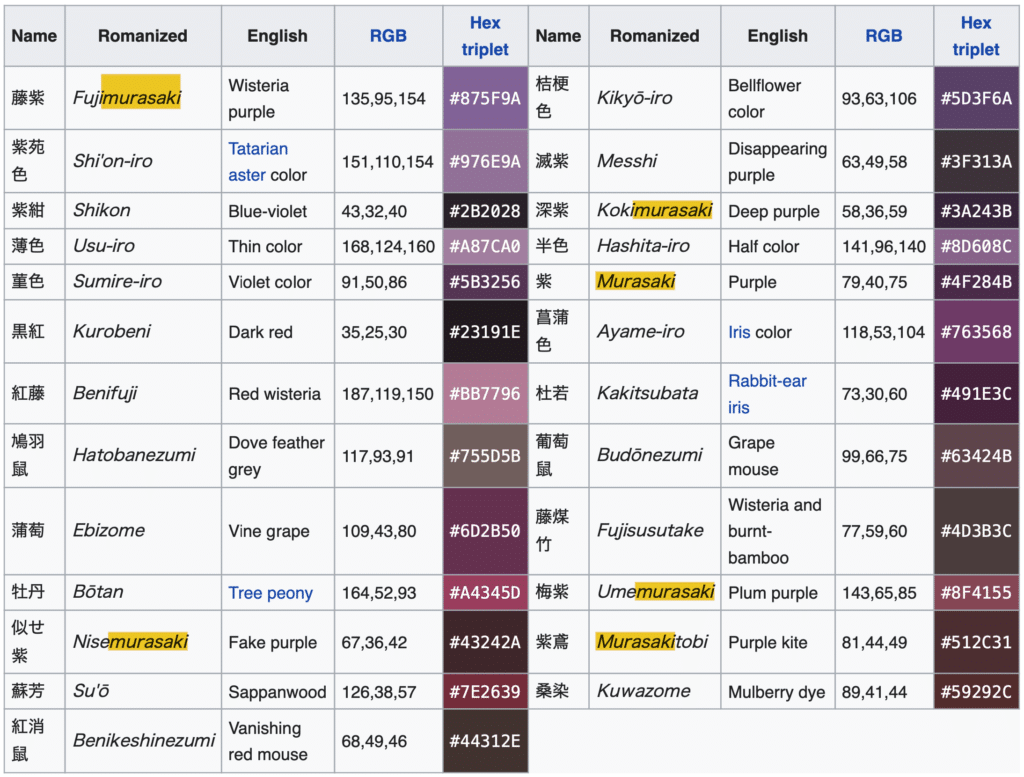
See “murasaki” in all of the highlighted color names. Credit: https://en.wikipedia.org/wiki/Traditional_colors_of_Japan#Violet_series] 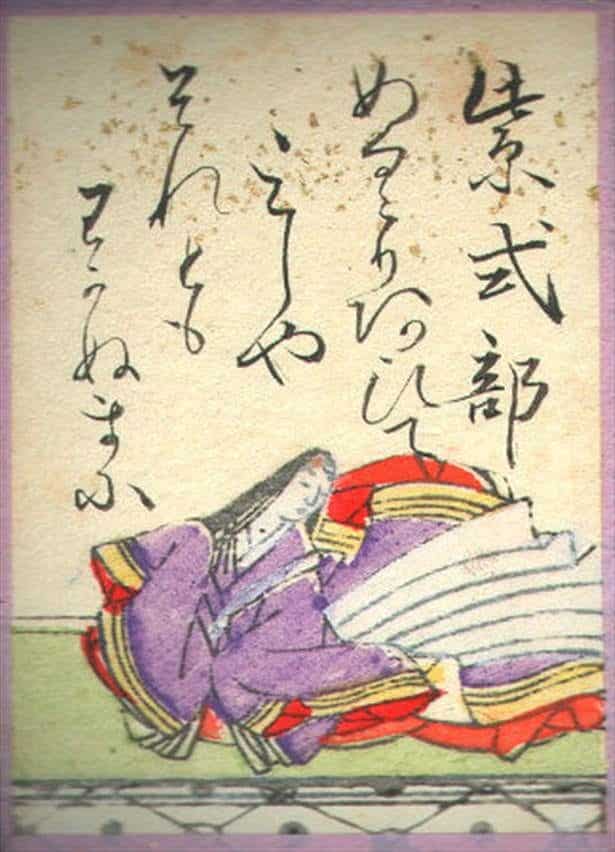
Murasaki is shown dressed in a violet kimono, the color associated with her name, in this Edo period illustration. Credit: File:Hyakuninisshu_057.jpg
Murasaki started transcending boundaries when she was a child. Though Heinan women were usually excluded from learning Chinese, the language of the elite, Murasaki’s family was a literary one—her father, grandfather, and great grandfather were all poets in their own right. Although children of this time and place normally lived with their mother only (not their father), Murasaki’s mother had died early on, so she was raised in her father’s house in the midst of a literary culture. Murasaki, too, showed great interest and aptitude with Chinese classic literature and managed to become fluent in Chinese during her childhood.
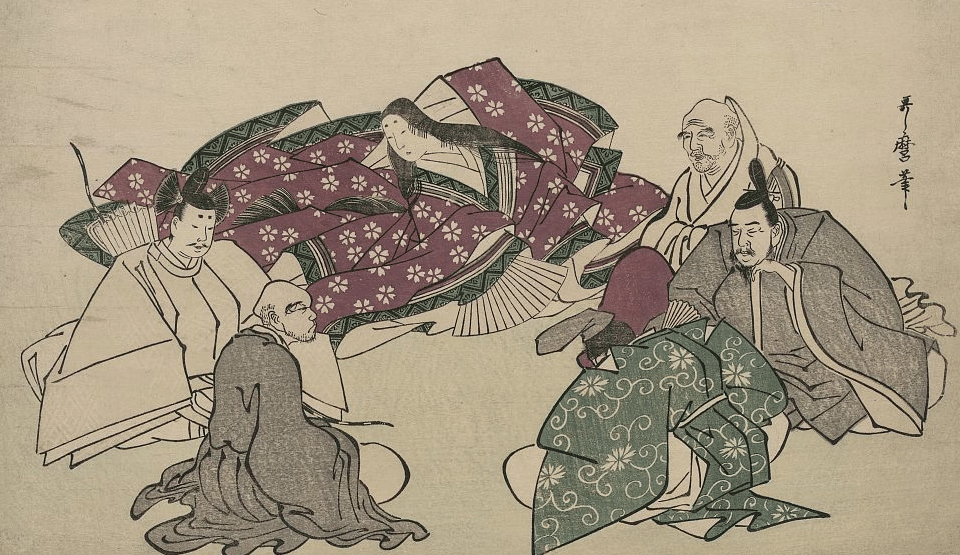
She married in her twenties (which was late for her time) and gave birth to a daughter, though her husband died soon after they were married. It was around this period that she started writing The Tale of Genji; legend has it that, lonely after her husband’s death, she was inspired to write the book on a moonlit night while on a retreat at Lake Biwa.
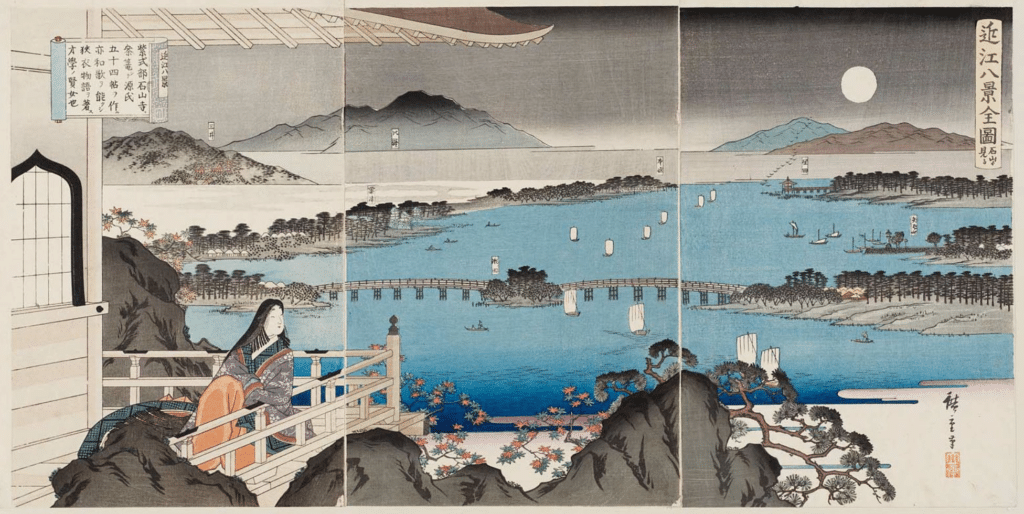
Probably because of her reputation as a writer, she was invited to serve as a lady-in-waiting to Empress Shōshi and wrote during her service there, frequently adding courtly scenes to her work. Indeed, Empress Shōshi, who was more than fifteen years Murasaki’s junior, surrounded herself with many talented women writers such as Izumi Shikibu, Akazome Emon, and Sei Shōnagon. Sei Shōnagon became Murasaki’s writing rival, and the two women probably used each other as inspiration to write more and better. During this time, Murasaki also taught Chinese to Empress Shōshi.
From historical evidence, it seems that Murasaki was not quite happy at court, however. When Empress Shōshi retired from imperial life, Murasaki probably moved with her to a more remote royal mansion. Murasaki probably died there at the age of 41. Her legacy lived on however, both in the form of her writing and her daughter, Daini no Sanmi, who also entered courtly life as a wet nurse to the future Emperor Go-Reizei and became a well-known poet herself.
Within a decade of Murasaki’s completion of The Tale of Genji, it had been distributed throughout the region. Within a century, it was considered a classic of Japanese literature and spawned many illustrations (particularly in the form of ukiyo-e woodblock prints). However, its language is so complex and archaic that it is now virtually unreadable to the modern reader. It wasn’t until the 20th century that the Tale of Genji and another work of poetry from Murasaki, called Diary of Lady Murasaki, got translated into modern Japanese and English.
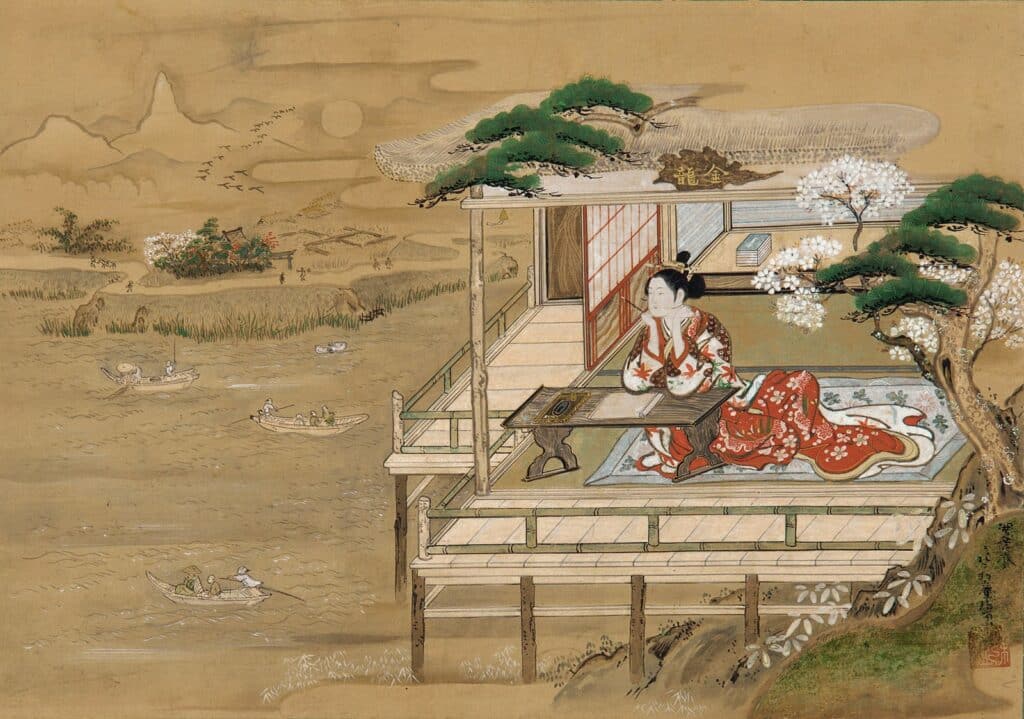
Today’s quotation comes from The Tale of Genji while the illustration was inspired by an illustration of the Tale’s fifth chapter.
“No art or learning is to be pursued halfheartedly.”
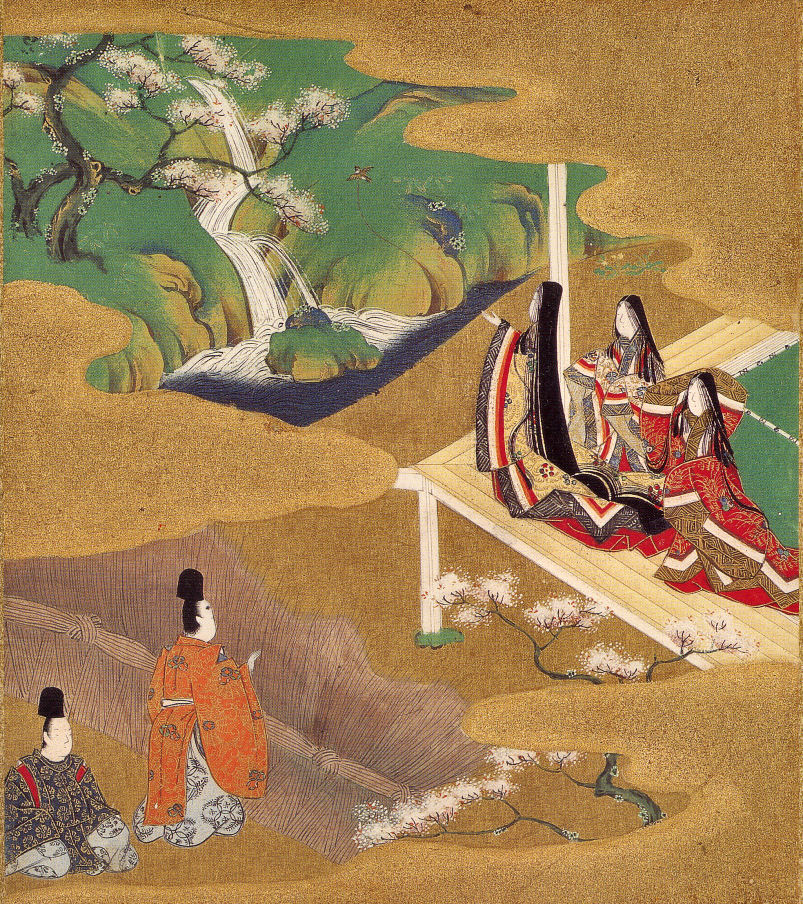
At SLOCA, we believe this! The quote goes on to say that “any art worth learning will certainly reward more or less generously the effort made to study it.” This quote goes right along with our character trait of the month, diligence. The more you put into learning or art, the more you will get out of it. Let us all pursue life with our whole hearts today!

Don’t forget to check out our Instagram stories for our free smartphone wallpaper, or download below!
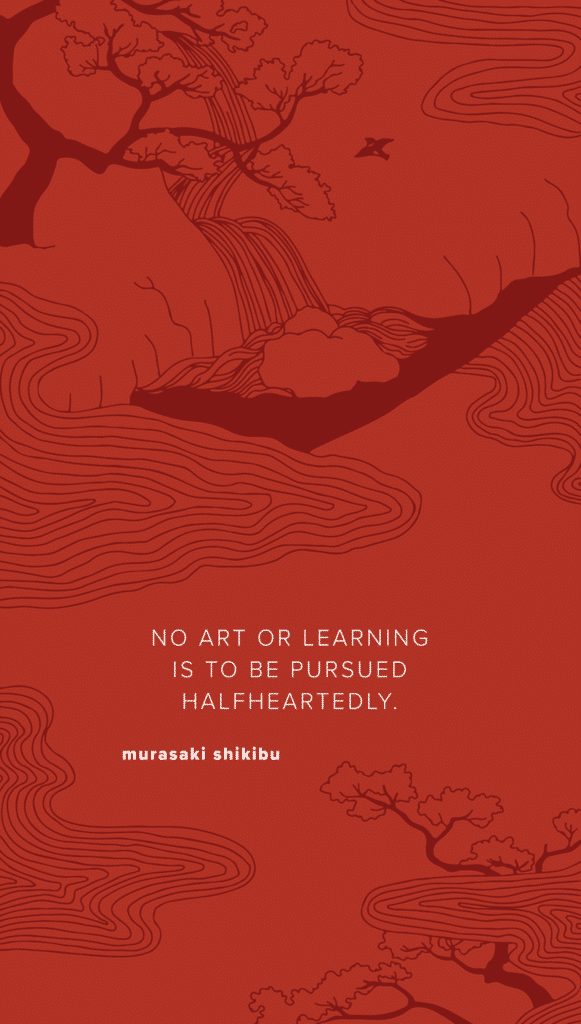





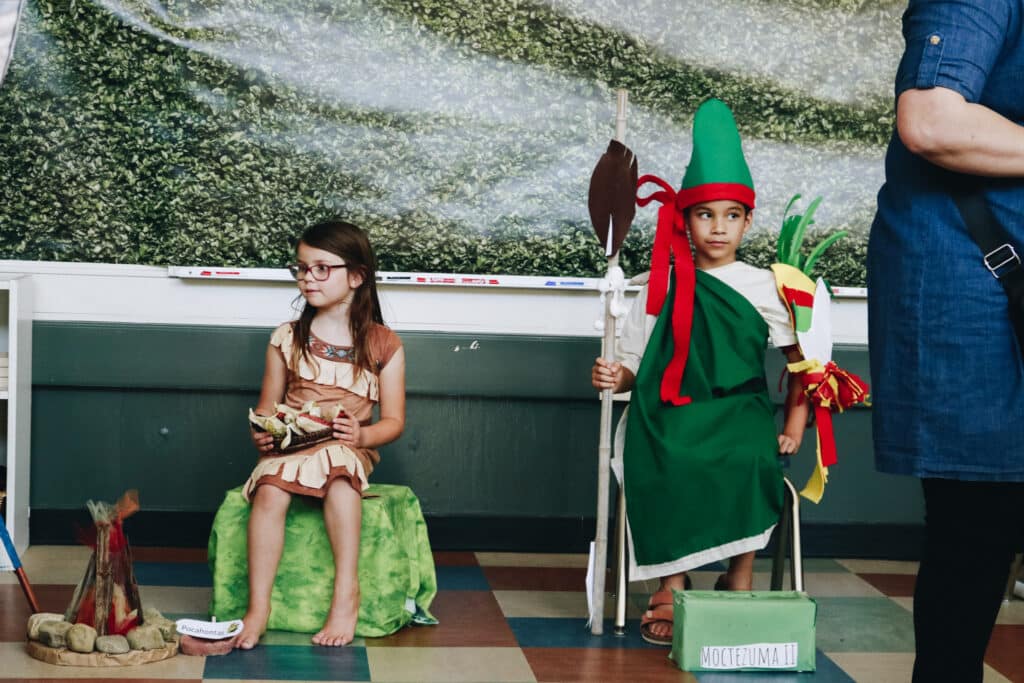







1 thought on “sloca somebodies: Murasaki Shikibu”
Incredibly interesting!!! Thank you!